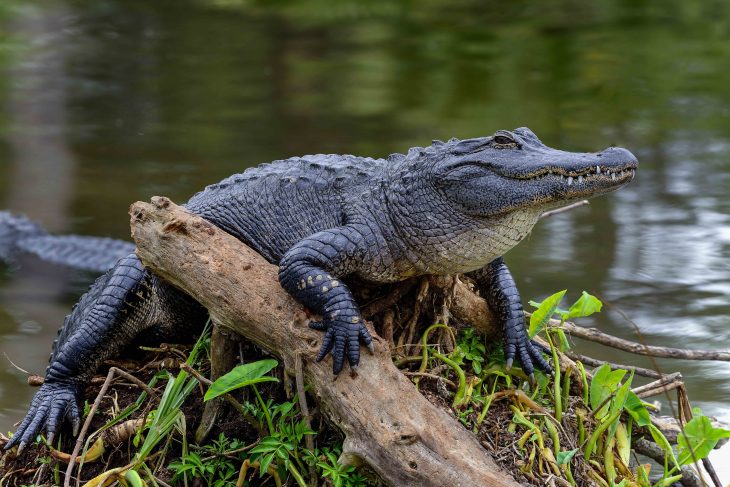
More than 30 million years ago, alligators primarily emerged during the Oligocene epoch. To this day, they perform an important role in sustaining ecosystem balance. This creature is on the top of the food chain and as an apex or alpha predator, alligators help keep other animal populations in check. Moreover, it does not stop there, because they also dig holes and leave trails throughout marshes which boost the habitats for fish and other marine invertebrates. A lot of people find alligators terrifying, but in fact, they are more afraid of humans. Here are the 40 facts about alligators that you need to know!
- Alligators are reptiles.
- They first appeared roughly 37 million years ago.
- Experts believe that the term alligator came from “el lagarto,” the Spanish term for “the lizard.”
- Early Spanish settlers and explorers in Florida named it alligator.
- They are endemic to the United States, China, and Mexico.
- Part of the crocodilian class, the alligator comes from the Alligator subfamily, which descends from the Alligatoridae lineage.
- There are still two surviving breeds of alligators: the American alligator and the Chinese alligator.
- American alligators can stretch up to 12 ft and have a weight of as much as 450 kg.
- Chinese alligators normally grow to around 5 ft or 1.5 meters.
- Male alligators are bigger compared to their female counterparts.
- Other names of Chinese alligators are Yangtze alligator, China alligator, and the muddy dragon.
- The Chinese alligator rarely exceeds 7 ft or 2.1 meters in length and weighs less than 45 kg or 100 lbs.
- Adults can have different colors such as brown, olive, and grayish-black, depending on where they live.
- The young ones, on the other hand, have vivid yellow or creamy stripes which strongly go against their dark skin. These colors help conceal them amongst tall grasses in swampy areas.
- Alligators have a lifespan of more than 50 years in the care of humans, but can only live for more than 30 years in their natural habitat.
- Alligators have a stubby, more bulbous nose compared to crocodiles who have lengthy, pointier snouts.
- Most crocodiles are bigger than alligators.
- Although crocodiles and alligators resemble each other physically, their genes are very different.
- Alligators and crocodiles can’t mate or interbreed.
- They have a “nictitating membrane” that safeguards their eyes, allowing them to see underwater comfortably.
Was this page helpful?
Our commitment to delivering trustworthy and engaging content is at the heart of what we do. Each fact on our site is contributed by real users like you, bringing a wealth of diverse insights and information. To ensure the highest standards of accuracy and reliability, our dedicated editors meticulously review each submission. This process guarantees that the facts we share are not only fascinating but also credible. Trust in our commitment to quality and authenticity as you explore and learn with us.


